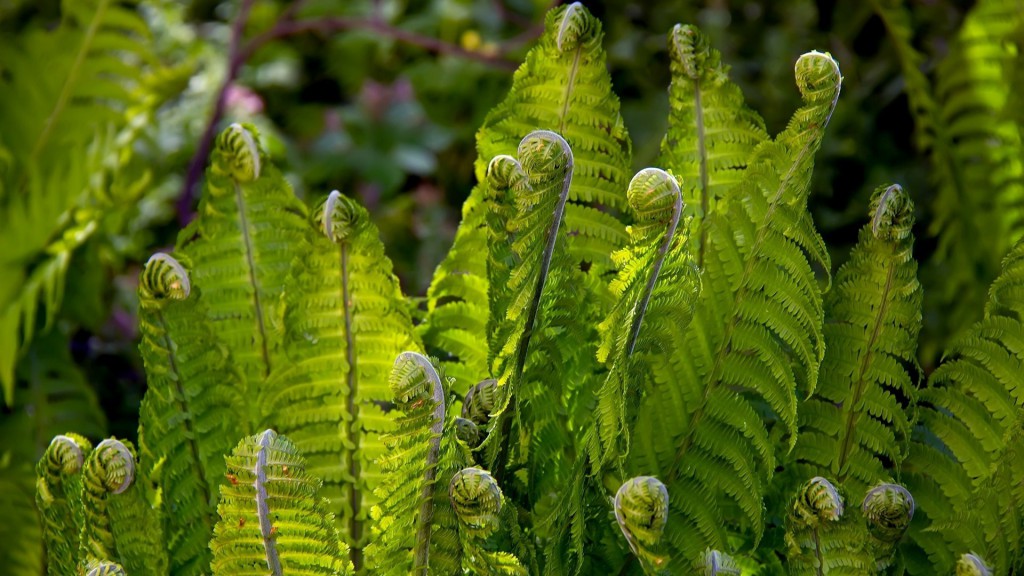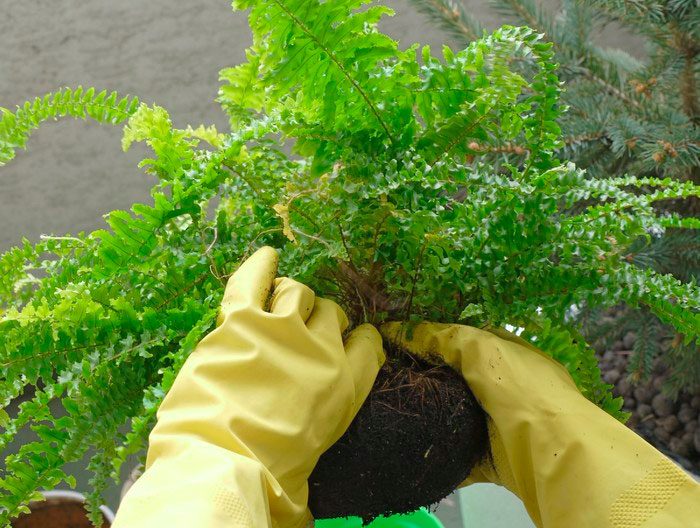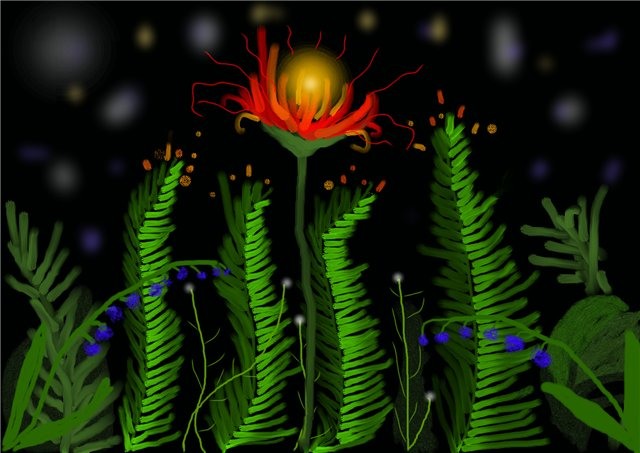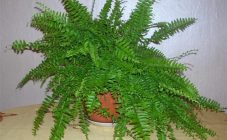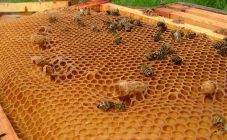Content:
The fern flower is mythical, since the plant is not capable of blooming. The fern belongs to the fern-like plants that reproduce by means of spores. However, the ancient Slavic belief is widespread, so some people do not doubt whether the fern actually blooms. Many people are interested in what a fern looks like and how to find a fern flower.
Description of the plant
Fern is a herbaceous plant belonging to the Osmundov family, the Fern family. The homeland of the plant is North China, Korea, the Far East Russian region. Distributed in Russia, Ukraine, Finland, Central Asia. It has a green stem with numerous feathery dissected leaves. The fern reproduces only with the help of spores, does not bloom.
It is believed that this plant is a descendant of the first plants on the planet - rhinophytes. Their branches gradually turned into leaves, while the spores moved from the end of the branches to the underside of the leaf. The process of spore emergence and maturation is very similar to flower growth. The collection of the plant takes place all summer long.
Today, there are thousands of fern species.
Fern structure, flowering
The stem of the fern is smooth and has no scales. The root system is powerful. The root belongs to creeping, buds are formed on it, from which young shoots are formed. Stepsons emerge from the ground at a distance of 10 to 20 cm. At first, they have a snail-like head, which gradually turns into leaves.
Sporulation is the main breeding method for ferns. Spores grow on the back of the leaf. As it matures, the spore capsule cracks and the spores fly away in the wind. As soon as they get on fertile soil, they begin to grow.
During the growth of the spore, an overgrowth is formed in the form of a small green cup. On the back of the outgrowth, sperm and eggs appear. After fertilization of the egg, seed germination begins, and the stepson begins to put down roots. The fern forms a bush for several years. Fern flowering is impossible.
Vegetative propagation of the fern is possible. In this case, long arrows form on the bush. They bend over to the kidney and are pressed down by a stone. Such reproduction is carried out by a person in a garden or summer cottage. The arrow takes root into the ground. For transplanting, a piece of land is dug out along with the root system.
The fern also reproduces by division. In early spring, it must be removed from the ground. Dense roots are washed with water from the ground, divided into shoots, which are then transplanted to another territory.
That which in everyday life is called leaves is called vayy in science. They are able to grow in length continuously. The fronds take an active part in photosynthesis and plant reproduction.
The bark of the stems serves as a support. Ferns have no cambium, so they are fragile. Compared to angiosperms, they have much weaker conductive tissues.
The structure of the fern is very different, depending on the species. There are low herbaceous plants, and there are also large ferns that resemble trees.Some ferns reach a height of 20 m. Moreover, the tree trunk forms branched and rather strong adventitious roots.
Legends of the blooming fern
The most widespread legend says that on the night of Ivan Kupala (from July 6 to July 7) the fern blooms in a dense forest. The blooming fern appears exactly at midnight as a blooming ember. Moreover, at this time it opens with a crash, illuminates the glade with a wonderful color and makes an unusual sound.
A person who has managed to master such a flower turns out to be subject to all secret knowledge. All the secret treasures in the earth can be accessible to him. But not everyone can get such a flower. It is located in the wilderness of the forest. To get to him, you need to overcome the fear of evil spirits that are gathering in the clearing. If a person gets scared or, even worse, looks back at the faces of the demons, then he will not see any flower.
This beautiful legend has some basis. There are very rare species of fern that throw out stems that look like bright flowers. But these are not flowers, but elongated and modified leaves with buds, which are called "sporangia".
Another belief says that at midnight a bud appears from a fern bush. It moves like a living bird. The movements come from the fact that evil spirits are trying to hide the flower from the eyes of a person. It grows like a hot coal.
The Carpathian version of the legend has a similar narrative. In this region, there is a legend about the red flower - rue. Ruta has yellow flowers, but on the night of Ivan Kupala, they suddenly change their color to red. This happens at night and the red color does not last very long. If a girl managed, despite her fear of evil spirits, to look and pick such a flower, then she can bewitch any young man with her charms. The same flower will be a real proof of love and will look beautiful.
There are interesting recommendations on how to pluck the fern color. To do this, you need to go to the forest in the evening on the eve of the holiday of Ivan Kupala, find a fern and spread the sacred tablecloth around it. This is the name of the tablecloth, which was used during Holy Week, before Easter. Around yourself you need to draw a circle with the help of a knife, also consecrated during the Holy Week. Next, you need to read the conspiracy and wait for midnight.
You need to wait for fern flowers with concentration and not be distracted by extraneous sounds, because evil spirits begin to yell, scream and whistle. Otherwise, the fern may not bloom. It is forbidden to be online. There is a belief that if you respond to the sounds of evil, when the plant begins to bloom, then you can die, because evil spirits rip off their heads and send the soul straight to hell. Walking near where the fern blooms should be very careful.
Interesting properties of the fern
In folk beliefs, this plant has magical properties. Since time immemorial, it has been used not only for magical rites, but also for the treatment of many diseases:
- With the help of a flower obtained at midnight before Ivan Kupala, you can find treasures.
- To attract the groom, the girl weaves a branch of a fern into her braids and wears it like that.
- To get rid of pain during sciatica, you need to fill the mattress with fern leaves and branches. The medicine says that pain and inflammation will go away quickly.
- The root of this plant is used in magic against the evil eye. For this, the crushed part of the root is added to various potions. Anyone who drinks such a decoction will get rid of diseases caused by the "evil eye". It can protect you from disease.The root helps with love spell and lapel, removes the effect of any ritual to which the person did not agree.
- If you place a whole fern root above the house, it will protect the inhabitants of the house from negative energy. A sorcerer and any person with evil intentions cannot enter such a dwelling.
- To use the fern as a reliable remedy for the evil eye, you should wear it as close to your body as possible. To do this, the fern is dug up at dawn, washed, put in the sun to dry. It must be applied the next day.
- The root is used from gypsies. The plant helps to maintain clarity of thought and will not allow a person to deceive himself when communicating with her.
Some peoples use the fern for pickling. Harvested products with fern added to the brine have very interesting taste.
A fern is a plant that never blooms due to the peculiarities of its structure. Of course, there are people who still believe that at midnight before the holiday in a dark and dense forest you can find a magic flower, and that the plant can bloom. There are many secrets and beliefs associated with the plant, each of which is beautiful and unique in its own way.
